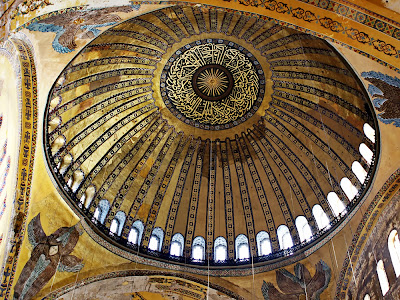The Turkish
city of Istanbul is rich in history, having been home to three empires: the
Islamic Ottoman, Christian Byzantine, and Roman. This blended cultural heritage
continues to influence Istanbul to the present day, as elements of all three of
these empires can be seen in various religious façades and tourist attractions
around the city. Visitor reviews support the popularity of this destination.
There is an abundance of interesting things to do, but here are the five
activities that visitors find most intriguing:
Riding a Boat on the Bosphorus
Taking a
ride on this renowned river allows travelers to see some extraordinary sites.
Passengers will see old-style Ottoman homes, ports, fancy suspended bridges,
palaces and other interesting buildings. Connecting the city across the two
continents of Europe and Asia, the Fatih Sultan Mehmet Bridge and Bosphorus
Bridge can be seen during a boat ride.
Visiting the Topikapi Palace Museum
This museum was
commissioned in 1459 by Mehmed II, the Ottoman Emperor responsible for the
conquest of the city (then Constantinople) and the end of the Byzantine era.
The building is supremely elegant, with lavish courtyards, extravagantly
designed rooms, terraces, fountains and stylish gateways. Visiting this palace
provides a glimpse into the opulent ways in which these sultans lived and
Mehmed's lofty vision for his new empire.
Taking a Trip to the Blue Mosque
The Blue
Mosque (formally known as the Sultan Ahmed Mosque) is one of the largest
structures of its kind in Istanbul, and derives its name from the intricate
blue and white tiles that are arranged in elegant patterns in its interior. Built
during the Ottoman Empire in the early 17th century, the mosque is
still open for worship today and has also become a much-frequented attraction.
Those who decide to visit this mosque are advised to cover their heads with a
cap or scarf out of respect for tradition.
Stopping By the Hagia Sophia
The Hagia
Sophia was completed for the first time in 537, after which it was restored and
repaired many time over the course of its history due to earthquakes, fires,
disrepair, and other issues. From its construction until Mehmed II conquered
the city in 1453, the Hagia Sofia was used as a church. Afterwards, it was
converted to a mosque and was used as such until it was converted again, this
time into a museum, in 1935. The famous dome of the structure is unquestionably
the most notable of its many attractions, but the mosaics, marble pillars, and gates
are also well worth a look.
Shopping At Istanbul's Grand Bazaar
At the
bazaar --which has existed since just after the Ottoman conquest of the city-- travelers
are sure to find a wide variety of treasures, with lots of hand-crafted ceramics,
hookahs, bedspreads, carpets, clothing, spices, teas and a wide variety of
other souvenirs. Though the bazaar may seem like a bundle of noise and
confusion, vendors are friendly and will engage their shoppers in conversation.

